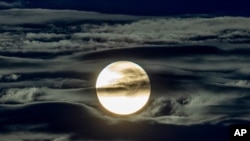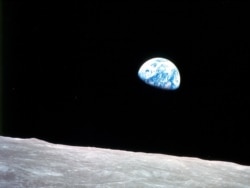New research suggests that the collision of space objects that created Earth's moon may have robbed it of 10% to 60% of its original atmosphere.
Most scientists believe that about 4 billion years ago when Earth was still developing, a massive object the size of Mars hit the planet, sending vaporized particles from the collision into space, which were then bound together through gravity to form Earth's moon.
The so-called "impact hypothesis" is one of three key theories of the moon's formation. The others suggest the moon was either formed at the same time as Earth, or that it was captured by Earth's gravitational field as it traveled through space.
In the new study published Wednesday in the Astrophysical Journal Letters, researchers focused on the impact theory, and ran more than 300 computer simulations of massive object collisions with rocky planets with thin atmospheres like Earth.
The scientists factored in the angle at which the objects hit the planet, the speed of the impact, as well as the size and mass of the colliding object.
Previous research suggested impact collisions during the late stages of a planet's formation period can affect its atmosphere. Expanding on this idea, the simulations in this study revealed that a collision like the one that could have created the moon would have cost the Earth a significant portion of its atmosphere.
Lead researcher on the study, Durham University cosmologist Jacob Kegerreis, said that while the computer simulations do not directly explain how the moon was created, "the effects on the Earth's atmosphere could be used to narrow down the different ways it might have been formed."
Kegerreis said the study also shows a new way to study how similar collisions lead to loss of atmosphere on young, rocky planets. Or, he said, the study also suggests such collisions could lead to significant atmospheric gains if the colliding object also has a thick atmosphere.









